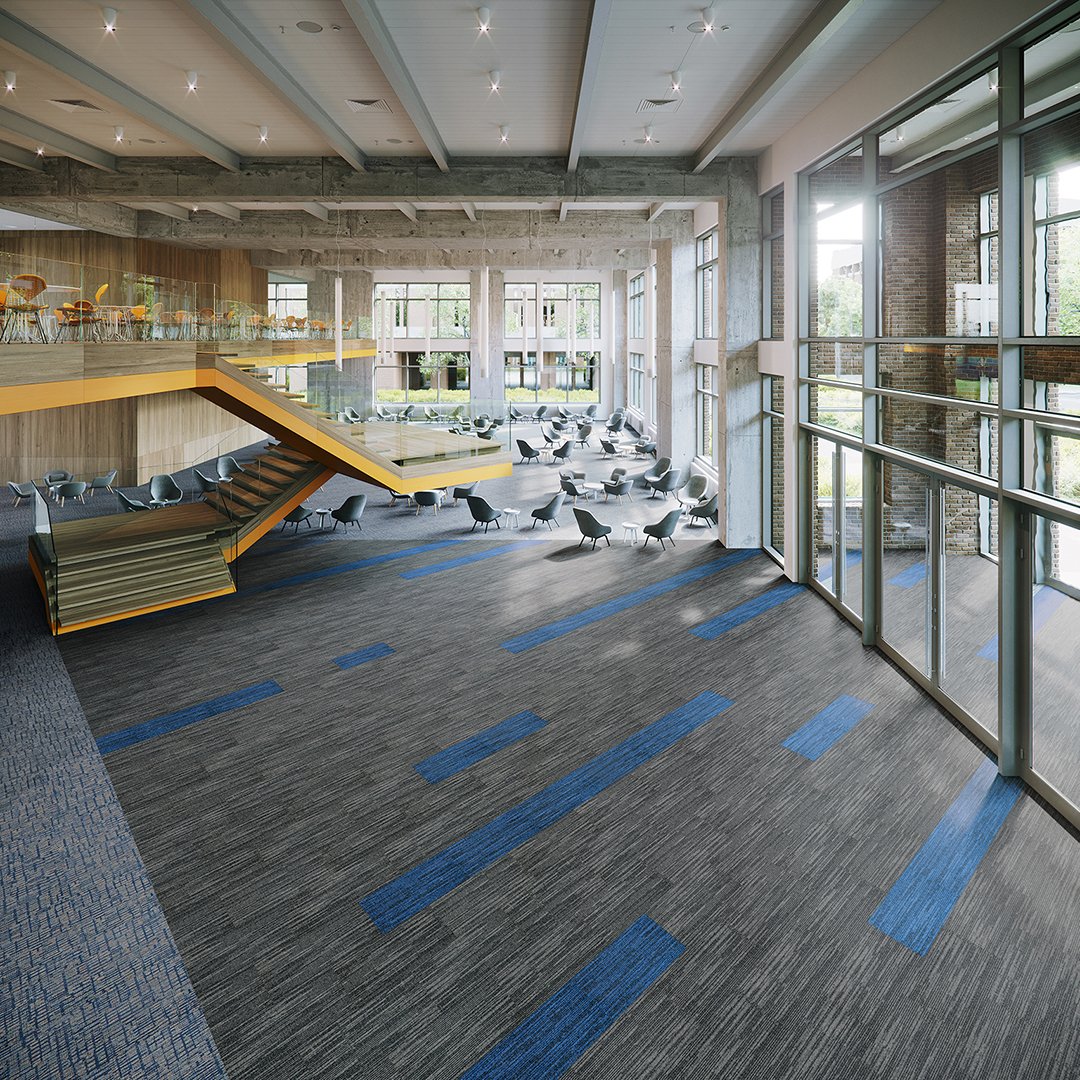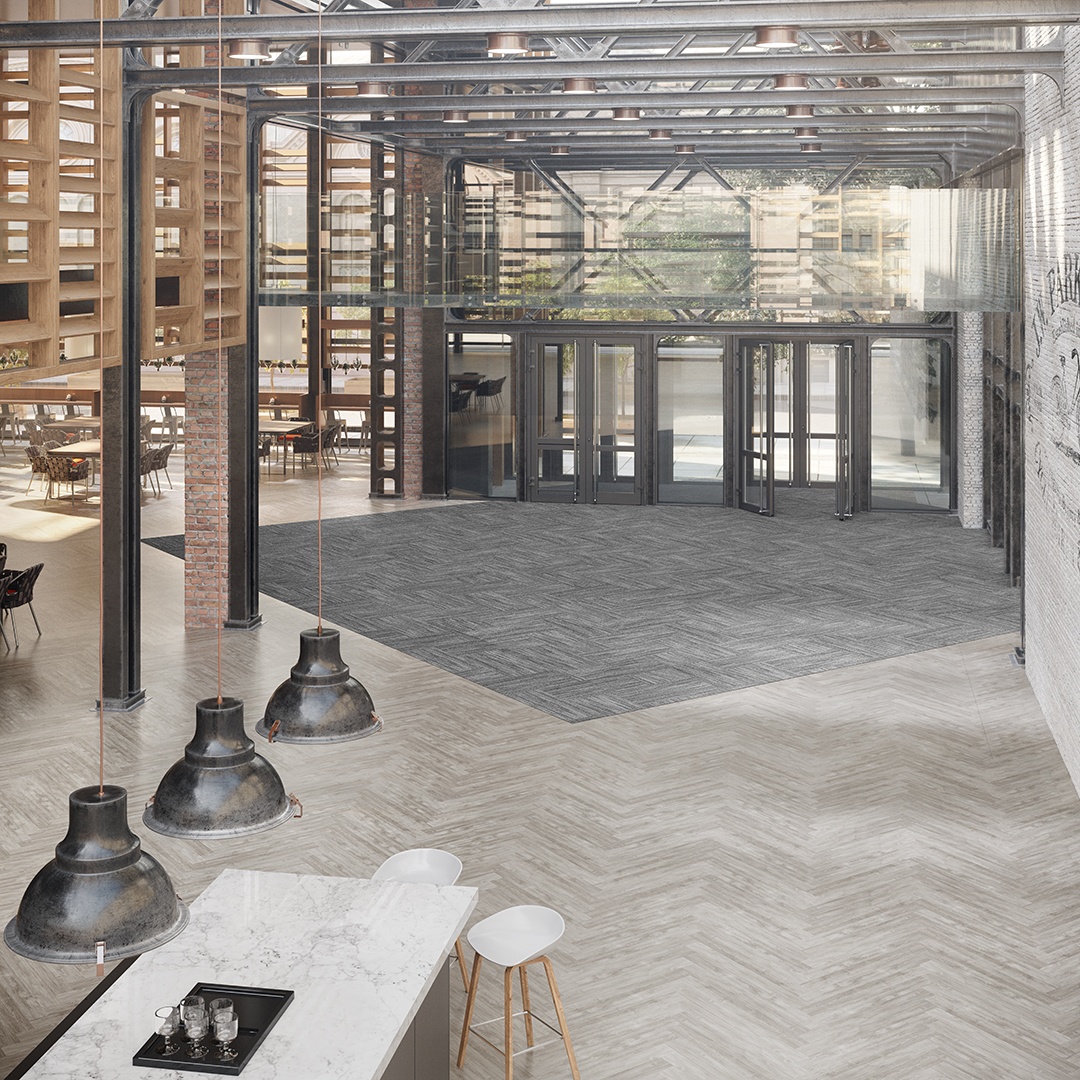Q&A: With Jim Toth Jr.
Those first few steps into any building are critical to the performance of the flooring throughout a facility. By trapping excess dirt and moisture at the door, the Entryway System reduces maintenance costs, extends flooring life, and enhances safety. Entryway cleaning procedures should be adjusted according to changes in season, weather, and traffic load.
In the interview below, Jim Toth Jr., Manager of Commercial Maintenance at Mannington, shares tips and common pitfalls when creating and implementing a cleaning protocol.
Dallion Duran-Ballen:
Jim, based on our previous conversations, your top priority is establishing a procedure and having a schedule for cleaning and maintenance. Can you elaborate on that?
Jim Toth Jr.:
It’s important to have cleaning and maintenance procedures in place that vary based on floor type and dirt load. For instance, once a new season starts to arrive, it should be like, “click, time to move to the cleaning protocol that is appropriate for this new season.”
Let’s say it’s the rainy or snowy season somewhere in the Northeast, and the entryway is carpet. Instead of using a dual motor vacuum, you move to a carpet extractor, or a wet-dry vacuum because the dirt will be a combination of wet and dry. If de-ice products like rock salt have been used on the roads and sidewalks nearby, it’s important to customize the regimen further in order to have effective and efficient removal of that de-icing substance.
Related: How To Maintain Commercial Flooring In Winter Weather
There is a cost to doing this well. There's an association called ISSA, which stands for International Sanitary Supply Association. Years ago, they did a study, and they found that it takes approximately $700 to remove one pound of dirt from inside a facility, so you really want to make your cleaning regimen as efficient as possible.
And we're talking about a pound of dirt, which would almost fit in the palm of your hand. As a reminder, there is a big difference between soil and dirt. They are different regarding composition and where you can find them. An easy way to explain it is dirt is soil, but it is not where it should be. So yes, it is very expensive to remove dirt from a facility.
Catching that dirt and debris before it reaches the inner facility can save money. Cleaning and removal of dirt is typically more efficient and effective when it occurs in the entryway. It keeps that dirt from circulating throughout the facility, which saves on other aspects of cleaning.
 Frixtion Collection Inertia & Quadrant Collection Align
Frixtion Collection Inertia & Quadrant Collection Align
DD:
It sounds like focusing on that entryway can maintain and preserve the rest of the flooring in the facility.
JT:
Yes, not only the flooring, but it also helps many aspects within the facility. HVAC filters, dusting, detail work, indoor air quality is all influenced by how well we remediate the dirt coming into the facility. When the entryway is maintained properly, the entire facility and its occupant's benefit.
DD:
What are some common mistakes you see when it comes to caring for soft surface (usually carpet) entryway floors?
JT:
The number one issue I see across North America is the failure to differentiate cleaning protocols according to season and traffic load. Maintenance teams are performing the procedures in seasons with light dirt loads as they are in seasons with heavy dirt loads. As a result, clients are not happy with how the floor looks. Sometimes Mannington gets called in because the client is wondering why their floors don’t look the way they should, and this is often the cause.
Related: The Best Way To Clean Luxury Vinyl Tile and Sheet Vinyl
DD:
When you say heavy dirt, do you mean weather related issues?
JT:
Increased dirt and debris are typically due to weather related issues. But with some facilities, heavier dirt levels are the result of an influx of people or materials. Let’s say a facility typically has 200-300 people coming in each day, and they have a cleaning and maintenance protocol for that amount of traffic.
An event happens and the influx of foot traffic doubles for a time. In some cases, that facility keeps using the exact same cleaning schedule and protocol when it needs to be adjusted to accommodate the additional traffic flow and resulting dirt.
DD:
Do you see this across the board for all types of facilities? Would you say the same thing for a school, a hotel or a hospital?
JT:
Yes. In school systems, there may be a normal process that works, but let's say the school gets new mulch for the playground, torrential rains or adverse weather, and more dirt is tracked in than usual. The school needs to use a different protocol—one that accounts for that change—in order to maintain the same tidy appearance expected.
Or let’s say a hotel has a convention or after the first bell at a school. There is typically a windfall of foot traffic. The carpet will look dirty and frazzled unless an appropriate cleaning protocol is put into action.
There should be a regimen in place to remove all the tracked dirt from each entryway system as well as the flooring just beyond the entryway system. That area needs to be cleaned quickly and thoroughly so the extra dirt load is not tracked throughout the facility. If the added dirt and debris is not removed quickly, it will circulate throughout the facility and lead to a bigger task for the cleaning staff.
You Might Like: The Designers Ultimate Guide to Specifying School Flooring
Frixtion Collection Inertia & Mannington Select Wood
DD:
That makes sense. So, when it comes to entryway systems, do most facilities use soft surface flooring like carpet in the entryway?
JT:
Yes. Mannington recommends that clients utilize soft surfaces for 10-to-20-foot falls into the entryway. This helps scrape off dirt or debris, or whatever's on the underside of shoes and wheels, to prevent it from going further into the facility.
The accumulated soil needs to be removed. If the extra debris is not removed on a routine basis, then it's going to fill up the carpet (or whatever scraper fibers are on that floor). When the entryway system gets filled with debris, it will no longer remove anything from shoes or wheels as more people and deliveries come in. The new dirt is now being tracked further and further into the facility.
DD:
What are the products and procedures that facility managers and maintenance crews are supposed to be using?
JT:
That depends on the type of dirt and floor. If it's dry dirt and debris, we typically recommend in our maintenance instructions dual motor vacuums. They are ideal to remove dirt and debris from carpet fibers ensuring that carpet continues to do what it's supposed to do. If the dirt becomes wet and built up, the use of a pile lifter as well as an extractor is necessary to restore the entryway system to do what it is designed to do.
If it’s a hard surface entryway, running an auto scrubber and utilizing a microfiber mopping process past the entryway system to remove dirt is key. Again, it's important to remove all the dirt and debris. Some people just use a mop by itself, and they end up pushing the soil and debris around instead of removing it.
DD:
Let’s say a facility manager is reading this or someone who's in charge of a maintenance crew. What is your advice to them?
JT:
One of the common concerns I hear is about cost and time. My encouragement to the people that have responsibility for facilities is this: yes, there is a cost that's associated with maintaining your entryway well. And maybe the cost will be a little more compared to what you're paying now. But, if you look at it holistically, the cost is significantly cheaper in the long term. You will have a cleaner building, a more productive staff, and happier clients or patients, because the whole facility will stay cleaner. So, when you look at the big picture, cost is not an issue. The extra maintenance on the entryway pays for itself.
We believe creating custom cleaning and maintenance protocols is instrumental in maintaining healthy and clean facilities. If you're interested in learning more download the Guide to Cleaning and Maintaining Commercial Flooring.


